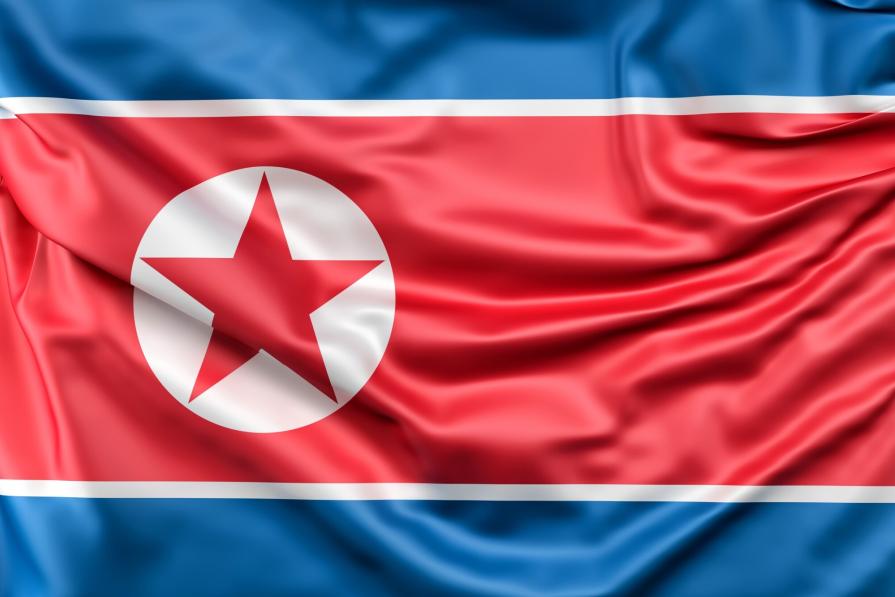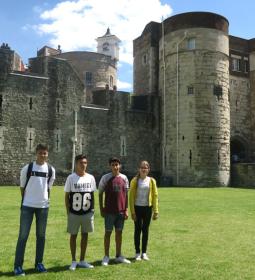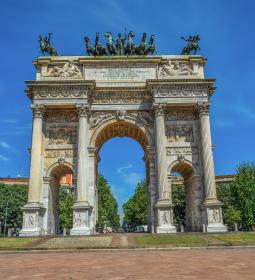The flag of the mysterious and frightening North Korean republic consists of a red field, equipped with a narrow white and wide blue border from below and above. In the middle of the central field in a white circle is drawn a red five-pointed star.
The style of the flag
The style of the flag of the DPRK is determined by Article 170 of the national constitution, according to which the above-mentioned cloth has a ratio of 1: 2, which is quite rare in Southeast Asia.
The main motive is the star,which serves as a sign of communist and socialist ideology. However, officially all this is in the past - the juche ideologyhas a leading role in the country, and all references to communist doctrines were scrupulously cleaned from the constitution, laws and program documents of the state. However, the world's constitutionalists are still convinced of its communist nature. In addition, despite fifteen hundred amendments adopted over 60 years, the description of the flag remains unchanged all this time.
The website of the Association of the Society of Friendship with Korea notes that the star is nothing more than a reflection of a tribute to revolutionary traditions outside of ideological coloring. The red background is determination and patriotism, the blood shed in the struggle for independence, the white background is the unity of the people and culture of Korea, and the blue background is the desire to fight for peace and freedom, a friendly and peace-loving foreign policy (which is true, as everyone can see).
There is also an official interpretation belonging to Kim Il Sung – he described the flag as follows.
- The main color is a tribute to the anti-Japanese sentiments that provoked a national uprising and became the reason for gaining independence from the occupiers, the unity of the people in this struggle.
- White – common roots and land, culture and linguistic traditions.
- Blue is the spirit of Korea and its people in the struggle for peace and progressive world trends.
There is also a diplomatic definition of national colors, used for interactions in the framework of international relations – both interstate and public diplomacy. In this vein, we are talking about the traditions of the people's revolution, the strength of the people, dignity and sovereignty.

History
At the end of the XIX century, Korea was ruled by a monarchy, and the state was considered an empire. At that time, a flag called "Taeguki" was used: the symbolism of yin and yang surrounded by trigrams - hieroglyphic groups. After the annexation of Korea by Japan, the flag remained with the Koreans, but only as an element of colonial paraphernalia.
In 1945, forty years of Japanese rule fell, the Soviet army and the atomic bomb completed the defeat of the Mititarians, which opened the way to national independence. Under the terms of the peace treaty, Japan cleared the Korean Peninsula, with the Soviet Union installing an occupation administration in the north and the United States of America in the south. In the south, a pro-American republic was proclaimed, and in the North - a people's socialist republic, at the first stage completely controlled by the USSR. It got to the point that in 1947 the revolutionary committee appealed through the Soviet general Nikolai Lebedev to Moscow: should they leave the old flag or is it better to take care of the new one?
Deputy Chairman of the Revolutionary Committee Kim Tu Bong believed that it was necessary to leave the former, but Lebedev based on Chinese medieval philosophy symbol seemed something superstitious and wild, so he insisted on a change. Kim Il Sung was completely dependent on the USSR and was forced to submit to the insistent wish of the ally. Five months later, a draft of the new flag was sent through the Soviet embassy from the bowels of the Ministry of Foreign Affairs, although the author's name remains a secret behind seven seals.
Until the official approval in 1948, the new symbol was used on a par with the old, pre-revolutionary one. In July 1948, Kim published a program article in which he gave an official reasoned answer as to why the old flag had been canceled.
In 1957, one of the fathers of the flag, Kim Tu-bong, was purged. Into oblivion were sent all the texts linking the development of the new flag with this man, and references to the use of Daegukhi. Since then, a new mythology has been formed, which served as the basis for a story in which the sole author of the project was none other than Comrade Ir Sen.
Interesting facts
- The use of this flag is banned on the territory of the Republic of Korea, as it belongs to the dictatorial regime of Pyongyang. There are a number of exceptions (official delegations and representations, as well as computer games).
- A prominent Korean scholar Brian Myers argues that the personal flag of the Supreme Commander and the banner of the Workers' Party of United Korea are much greater honors than the national flag, while the flag of the fat chairman of the Korean military is revered almost as a shrine and worship him on a par with the person of the leader.
- The Korean flag weighing 271 kilograms crowns the fourth tallest flagpole in the world - 170 meters. It is installed in Kijong-dong, the so-called "peace village" near Phamnunjom in the demilitarized zone on the Korean Isthmus.
- The Korean regime uses several other flags, including the flag of the People's Army and its units, the Navy and the Strategic Missile Forces. Their design is the same, but the colors are different: for the army blue and blue, for the Navy - blue and white.
- Along with the flag of the country, the symbols of the ruling party are also hung, reminiscent of similar flags of other communist, socialist and people's parties. As elements are used gold color sickle, hammer and brush: a demonstration of the unity of peasants, workers and intellectuals.











